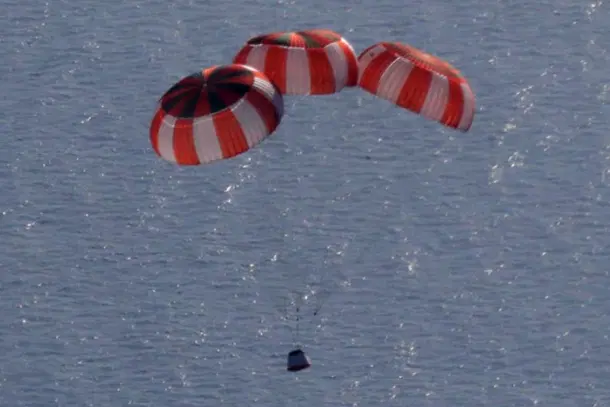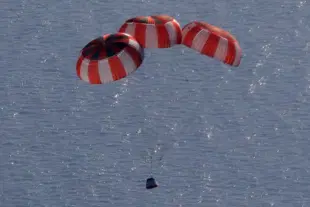News Brief
Gaganyaan Milestone: ISRO Successfully Completes First Integrated Air Drop Test Of Parachute-Based Deceleration System
Swarajya Staff
Aug 24, 2025, 05:01 PM | Updated 05:01 PM IST
Save & read from anywhere!
Bookmark stories for easy access on any device or the Swarajya app.


In a significant milestone for India’s upcoming human spaceflight mission, the Indian Space Research Organisation (ISRO) has successfully completed its first Integrated Air Drop Test (IADT-01) of the parachute deceleration system developed for Gaganyaan, India Today reported.
This trial marks an essential stage in verifying the safety systems that will enable astronauts to return safely to Earth.
The exercise was conducted with support from the Indian Air Force, DRDO, Indian Navy, and Coast Guard, highlighting the joint effort driving the Gaganyaan project.
The parachute assembly plays a vital role in enabling controlled descent and recovery of the crew module following re-entry into Earth’s atmosphere.
For the trial, a mock module was dropped from the IAF's Chinook helicopter. The module descended smoothly with the help of the new parachute system, confirming its effectiveness.
According to ISRO officials cited in an India Today report, the aim of IADT-01 was to evaluate the end-to-end functioning of the complex parachute deployment sequence, which includes extraction, drogue chute activation, followed by the main parachute deployment, ensuring smooth deceleration before landing.
This is a vital capability demonstration that gives ISRO greater confidence as India moves closer to the crewed flight.
The Gaganyaan mission's first uncrewed flight, scheduled for launch in December 2025, will mark India’s first venture into testing human expeditions to low Earth orbit.
The full-fledged manned mission planned for 2028 will position India as the fourth nation to independently achieve human spaceflight capability.
Under the mission plan, a three-member crew will be placed in orbit at around 400 km for up to three days before making a safe return to Earth.





